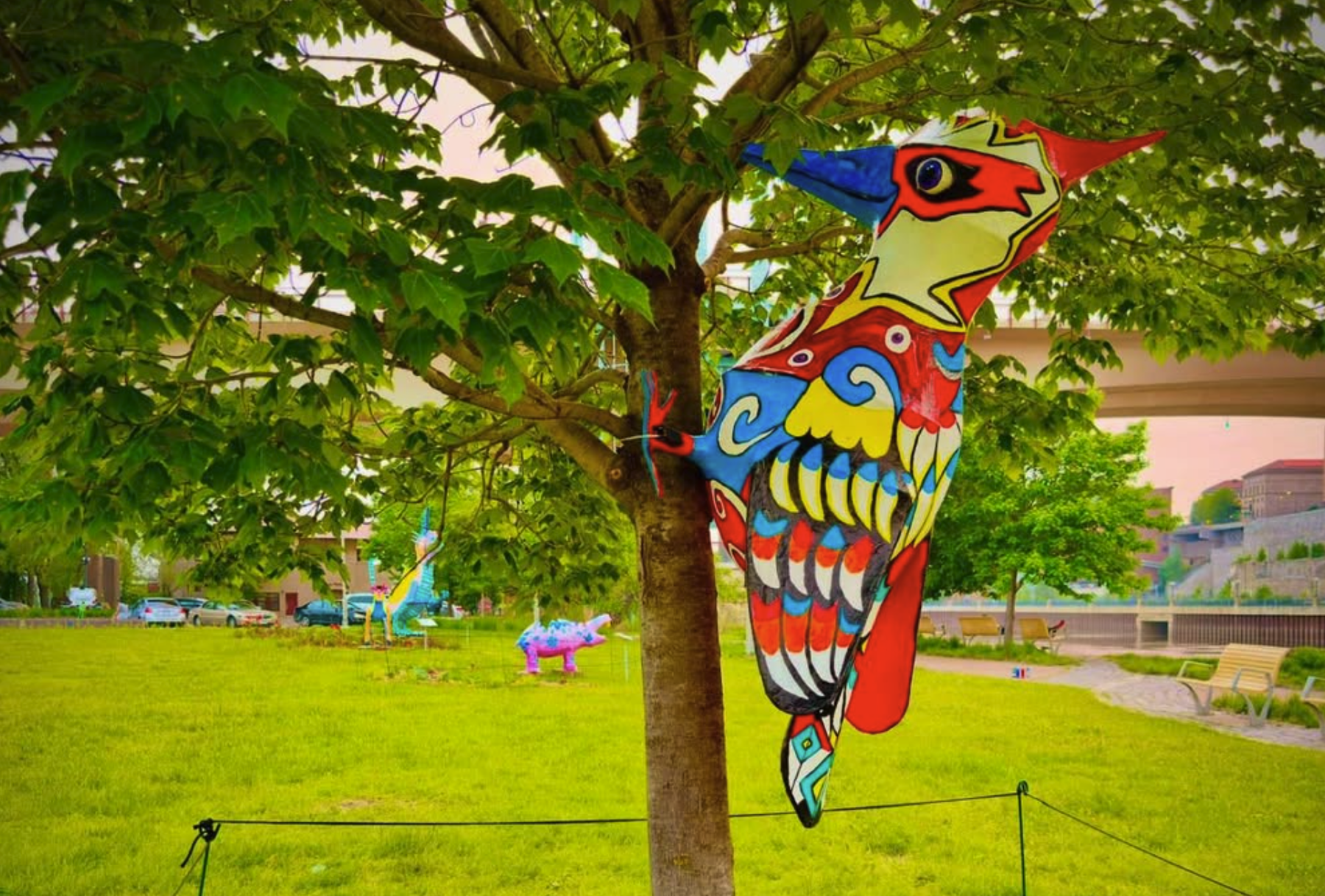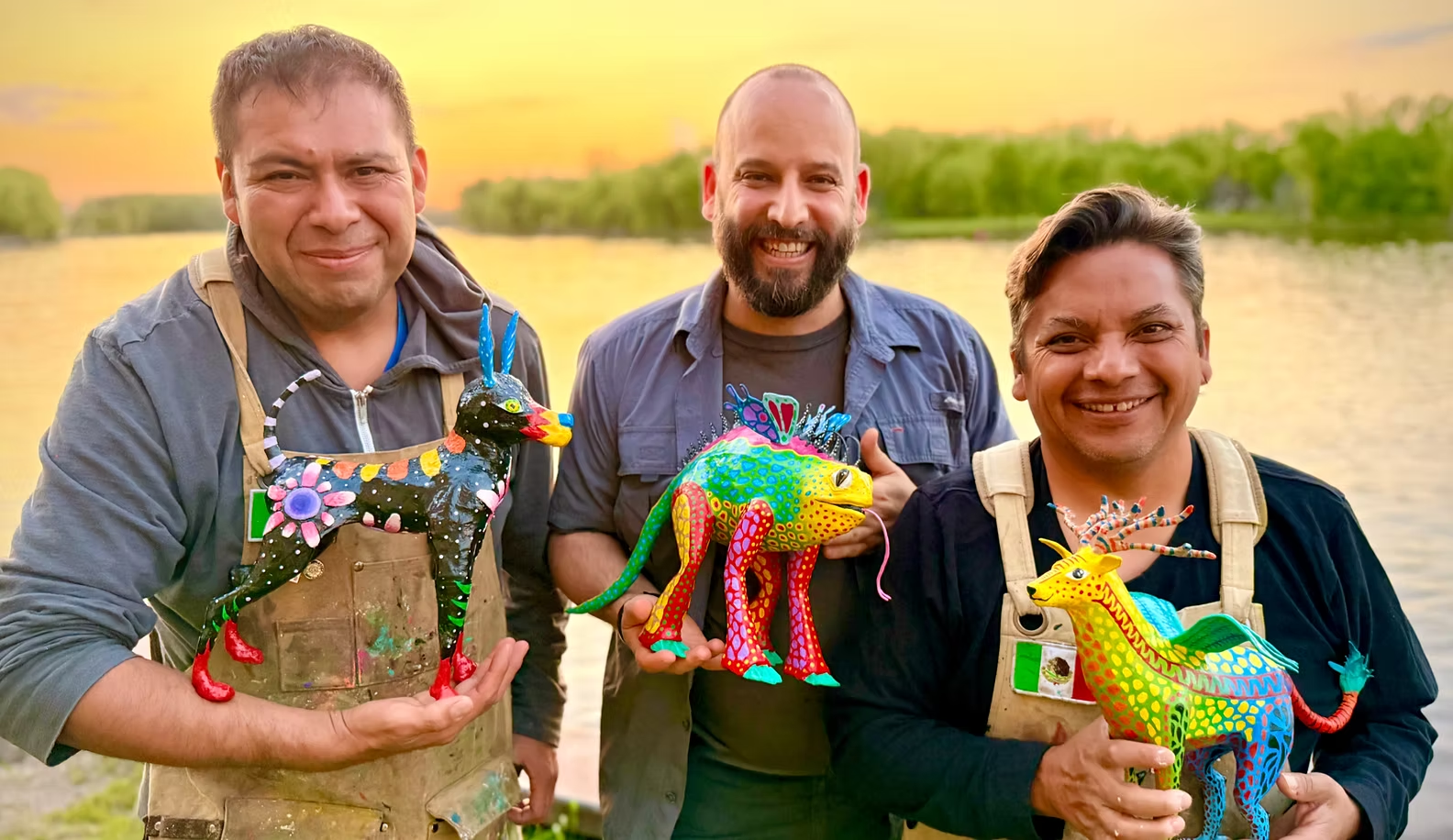The Must-See

Alebrijes: Keepers of the Island
Round out your summer with a bike ride out to Raspberry Island to check out the 16 giant papier-mâché sculptures that are the Alebrijes (ah-leh-bree-hehs). The exhibit is in partnership with Chicago’s Mexican Cultural Center Dupage and features artists from Mexico City. I think these might require multiple visits at different times of the day to get the full experience. Follow their Instagram page for art workshops!
From the website:
Alebrijes were created by the famed Mexican cartonero (papier-mâché artist) Pedro Linares in 1936. That year, Mr. Linares fell deeply ill and experienced significant fever-induced hallucinations. During this experience, he described walking through a lush forest and seeing multi-colored and strange animals -- toads with butterfly wings, lions with fish faces, and so on. As he walked through this fantastical landscape, the creatures began shouting in unison "Alebrijes! Alebrijes! Alebrijes!"
After Mr. Linares recovered from his near-death illness, he began sculpting the creatures he saw in his dream, and gave them the name: Alebrijes.
Since then, Mexico City cartoneros (papier-mâché artists) have developed their own unique alebrije creations -- each one wilder, more fantastical, and more creative than the last.
Since 2007, the Museo de Arte Popular (Mexico City museum of folk arts), has organized an annual parade of "Alebrijes Monumentales" -- large-scale papier-mâché alebrije sculptures.
In 2022, the Mexican Cultural Center DuPage -- a community arts organization based in West Chicago, Illinois -- organized the largest exhibit of Alebrijes Monumentales outside of Mexico in a park in the western suburbs of Chicago (Cantingy Park). This exhibit drew attention from across the state, and beyond!
Website: https://www.mnlatinomuseum.org/alebrijes
Who: MN Latino Museum
When: Through October 26, Island open every day from sun up to 10PM
Where: Raspberry Island, St Paul

Things to know
- Parking: Some parking on the island; also a short walk from street parking across the bridge on the south side of the river. Easy access on a bike from either side of the river.
- Dining: El Burrito Mercado is a sponsor of the Alebrijes, and is just down the street. Great food every day, but check out the beautiful patio with live music on Friday and Saturday nights after 6 ($5 cover + $15 minimum ticket).
- Attire: Match the sculptures with lots of bright colors!
- Accessibility: Accessible parking leads to wide walking paths, and flat ground.

The Discovery
Speaking of dreams, the Alebrijos exhibit is brought to us by the MN Latino Museum. If you don’t know where that is, it’s because it hasn’t been built yet. With plans for both indoor and outdoor space, the museum will be located in the historic West Side Flats, the St. Paul neighborhood where the first Mexican immigrants established a Latino barrio over a century ago. Please take the time to watch this video to understand more about this incredible project:
Field Notes
“Everybody loves art. And everybody hates paying for art.”
This is a quote from the above video, and I heard this many times in my years in theater. I certainly get the feeling, but I’m not sure that I agree. People do pay for art. They pay hundreds for concert tickets, Broadway, museum memberships. Heck, someone paid $450 million dollars for a da Vinci painting in 2017. People who can afford art pay for art. But that’s the problem. Art should be for everyone, not just those who can afford it. And art that tells the stories of the people who can’t afford art isn’t being produced on Broadway or hung in the MOMA, if it’s being seen at all.
But stories, whether they’re told through sculpture, paint, theater, song, dance, literature, poetry, and anything else are what are going to remind us that we’re human and that we’re connected and that this matters. The larger variety of stories that you find, the larger your view of humanity becomes. If you can afford to pay for art, I’d encourage you to choose now to pay for art that tells a lot of different stories. Challenge yourself to spend one year paying for art only at organizations with budgets under $1 million, and spend as much as you would in any normal year. You can buy season subscriptions to many theaters for the same price as one Broadway tour, and spend every weekend finding something new.
Broadway and the MOMA and these large organizations still make and curate beautiful art, of course. I love these places, too. But now, more than ever, is a time for the kind of expansive humanity that we find in the smaller corners of the art world. I hope to see you there!








